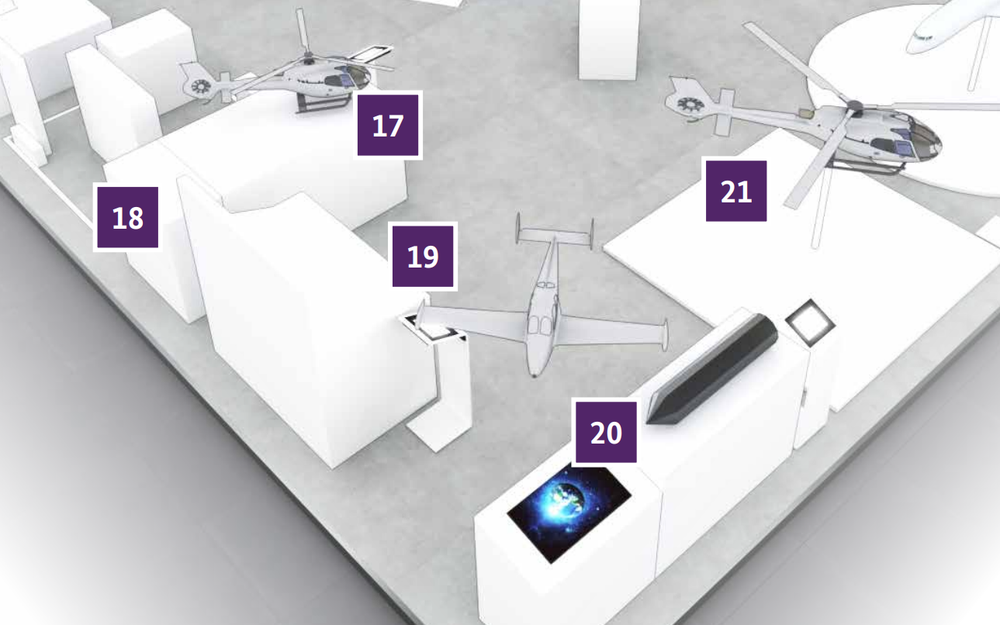Helicopter / UAV
17: The coaxial rotor system of the CoAX 600 ultralight helicopter
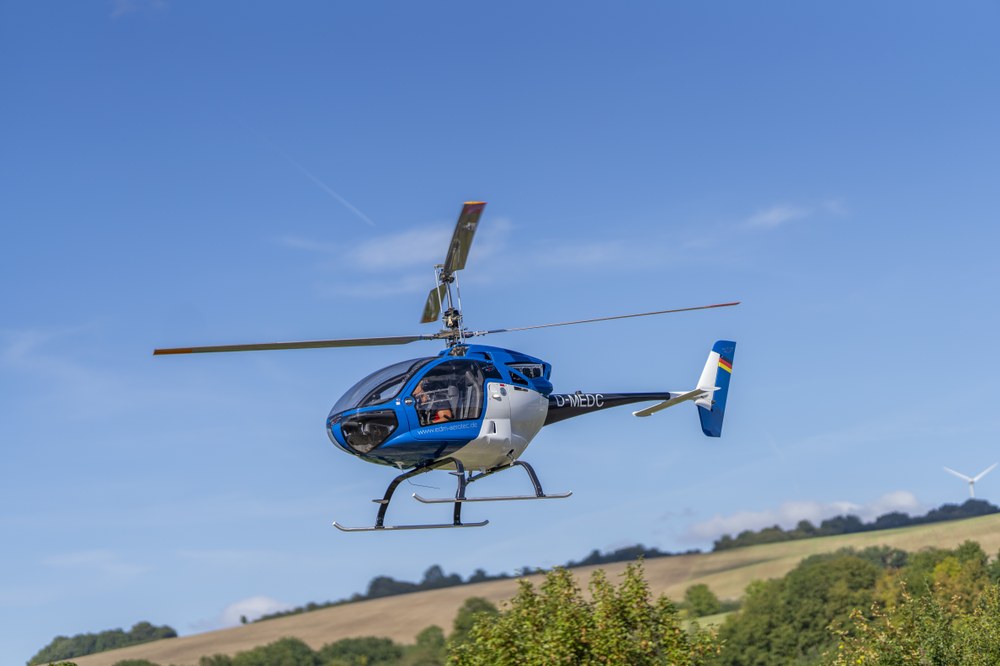
edm aerotec GmbH
The rotor system was developed for the CoAX 600 ultra-light helicopter. With a take-off weight of 600 kg, it is the first in its class and the use of the coaxial rotor system has made it possible to achieve greater stability, manoeuvrability and more efficient use of the available power. This makes the CoAX 600 attractive for various applications. The German type approval emphasises the quality and safety of the CoAX 600, making it a reliable choice for customers. The innovative coaxial rotor system of the CoAX 600 not only enables outstanding performance, but also impressive manoeuvrability. The precise control of the counter-rotating rotors enables the helicopter to make tight turns and precise landings. This makes the CoAX 600 suitable not only for transporting people, but also for special missions such as surveillance flights or rescue missions. The possibilities are many and varied, making the CoAX 600 an extremely versatile aircraft.
Further information can be found at www.edm-aerotec.de
edm aretec GmbH
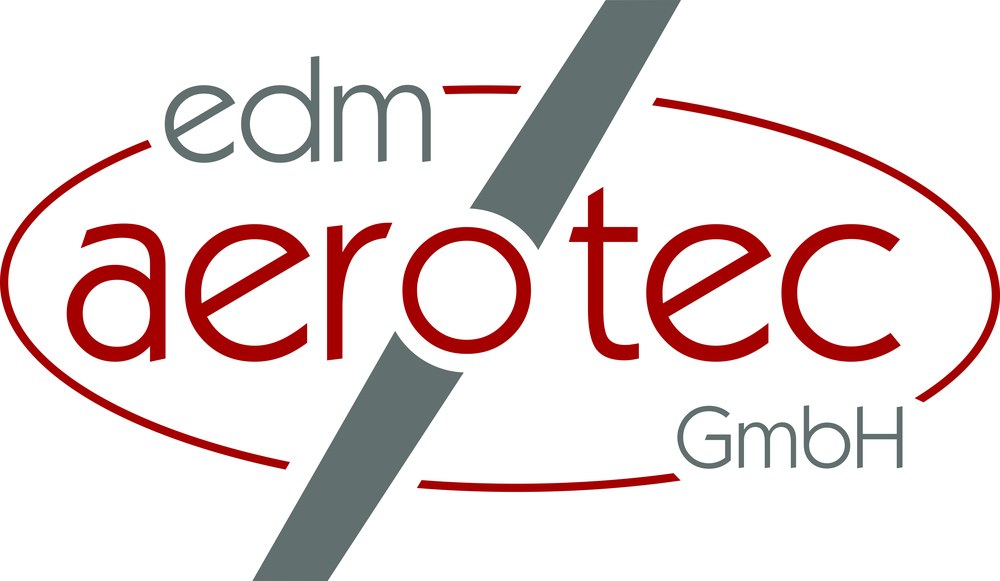
edm aerotec
edm aerotec GmbH has been producing ultra-light helicopters with a coaxial rotor system for more than ten years and is constantly developing them further. The CoAX 600 was successfully granted type certification in 2023. However, edm aerotec GmbH is also pursuing a wide range of research projects outside of the CoAX with the support of sponsors such as the BMWK. The quality requirements of EN 9100 are implemented in the company.
18: KOKO 2 Detect and Avoid Radar Demonstrator
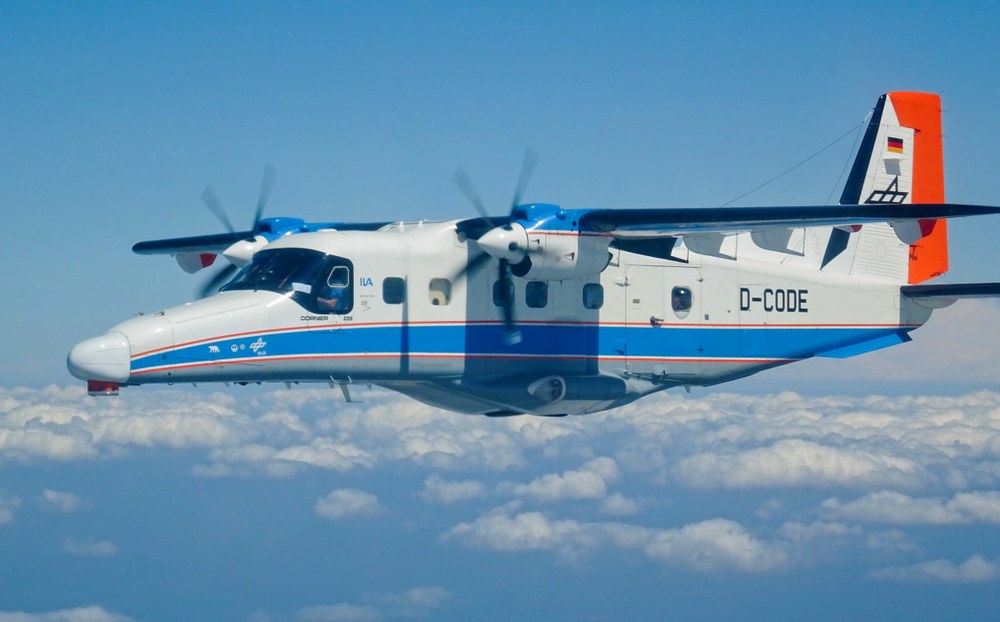
Hensoldt
A Detect and Avoid system is a critical technology for operating unmanned aircraft safely in airspace alongside manned aircraft. The Hensoldt Detect and Avoid (DAA) Radar Demonstrator is an Active Electronically Scanned Array (AESA) radar that was specially developed for use in a Detect and Avoid system. During development, the high demands on the accuracy and range of the detections on the one hand and the reduction in size, weight and power consumption on the other had to be weighed up against each other. The Detect and Avoid radar detects smaller aircraft such as gliders at a distance of up to 20 km in a range of 220° horizontally and 30° vertically in front of the aircraft. In addition to aircraft, the DAA radar also detects weather phenomena such as precipitation, turbulence and wind shear. The Detect and Avoid system fuses the radar data with data from other sensors such as ADS-B and generates alarms and avoidance recommendations for the remote pilot.
The Hensoldt Detect and Avoid Demonstrator was initially set up on behalf of the Federal Office of Bundeswehr Equipment, Information Technology and In-Service Support (BAAINBw) and further developed in the Aviation Research Programme V on behalf of the Federal Ministry of Economics and Climate Protection in the KOKO 2 project. In the KOKO 2 project, all essential parts of a Detect and Avoid system, consisting of the sensor technology, the algorithms for calculating the alarms and the avoidance recommendations, which were developed at the TU Braunschweig, as well as the interface to the aircraft, were demonstrated in flight tests on board a Do 228 of the German Aerospace Centre (DLR).
As a partner in the KOKO 2 project, the Bundeswehr University has developed a system for recognising clouds that supports the remote pilot during the flight. Technical support for the KOKO 2 project was provided by German Air Traffic Control (DFS).
Further information can be found at https://www.hensoldt.net/de/news/safe-integration-of-drones-into-airspace-is-getting-closer/
Hensoldt
HENSOLDT is a leading company in the European defence industry with a global reach. Based in Taufkirchen near Munich, the company develops complete sensor solutions for defence and security applications. With more than 6,500 employees, HENSOLDT achieved a turnover of 1.7 billion euros in 2022. HENSOLDT is listed on the Frankfurt Stock Exchange in the MDAX.
19: Control centre for multi-drone operation
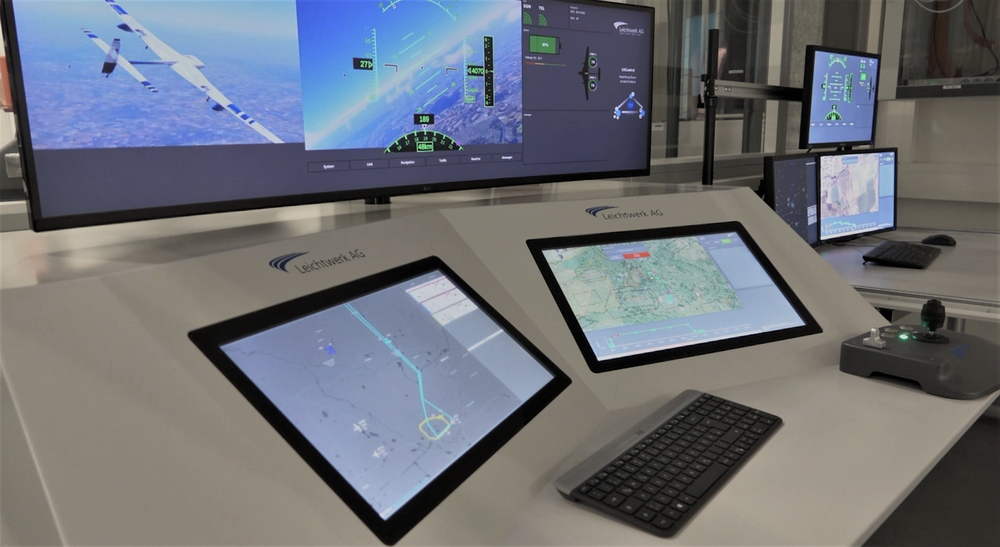
Leichtwerk AG
The control centre enables multi-drone flight operations, in which several control centres are networked with several drones. In combination with a comprehensive management system and the integration of customer systems, this maximises efficiency. At the heart of the solution is a hierarchical system for distributing responsibilities based on methods used in manned aviation. Advanced conflict algorithms, weather-based flight route optimisation and innovative visualisation concepts ensure safe navigation without interfering with other air traffic or airspace restrictions. The system offers flexible options for the management of payload data, both centrally as an API and decentralised on end devices. The overall architecture provides an open and modular system for easy integration of drone manufacturers, different configurations, autonomous vehicles and infrastructure. The control centre focuses on user-friendliness with a high degree of flexibility for use cases. Therefore, the separation of user and flight operation responsibility is provided. The mission can be planned and executed by the user, while the responsibility for flight operations remains with the control centre operator. In addition, task-oriented user interfaces for different use cases & mobile applications require only a minimum of training, no drone flight licences or other requirements. In the OBeLiSk research project, the control centre was further developed to integrate and validate new concepts for the planning and monitoring of High-Altitude Platforms (HAPS). In the OBeLiSk research project, the control centre was further developed in order to integrate and validate new concepts for the planning and monitoring of high-altitude platforms (HAPS).
Further information can be found at https://www.leichtwerk.de/software.html
Leichtwerk AG
Leichtwerk AG is an engineering service provider for the aerospace industry and an EASA-certified design organisation (DOA EASA.21J.332) specialising in the development and prototyping of high-performance gliders, manned and unmanned aircraft up to Part 23. It also develops products and services in the areas of fibre composite lightweight construction, liquid hydrogen tanks, complex aircraft systems and flight control and guidance software.
20: MEASURE: Development of an RPAS-based measurement system for the detection of radioactivity and volcanic ash for aviation safety

Enviscope
Three project partners, the German Weather Service, enviscope GmbH and the DLR German Aerospace Center, are jointly developing a modular measurement system for radioactivity and volcanic ash, including drop probes that measure pollutants, which will be used on the Do-DT25 of AIRBUS Defence and Space GmbH, as well as software components for data processing and determining the measurement flight routes for an efficient determination of the pollutant distribution.
Further information can be found at https://www.dwd.de/DE/forschung/projekte/measure/measure_node.html
Deutscher Wetterdienst

enviscope, DWD, DLR
The German Meteorological Service (DWD) is a higher federal authority within the portfolio of the Federal Ministry for Digital and Transport Affairs. It is responsible for fulfilling the meteorological requirements of all economic and social sectors in Germany. Our tasks are based on a statutory information and research mandate, the German Weather Service Act.
enviscope GmbH
enviscope GmbH, Messtechnik für Umweltforschung, based in Frankfurt am Main, has been active in the field of airborne atmospheric research (universities, research centres, large research facilities) for more than 30 years and covers all tasks required for the operation of our customers' scientific instruments on board aircraft. We offer solutions in the areas of design, certification, operation and maintenance.
DLR Institute of Aeronautics
In order to ensure that aviation can continue to make a decisive contribution to people's individual mobility, solutions are needed that contribute to the sustainable development of air transport. The DLR Institute of Air Transport researches the complex interrelationships of air transport and its subsystems with a focus on the development of scenarios, the economic analysis of the air transport system, business management analysis and the modelling and simulation of flight and fleet operations from the perspective of the air transport industry.
21: AIRBUS PioneerLab

Airbus
The Airbus PioneerLab is a technology demonstrator. It is used to test technologies that reduce the exhaust emissions of helicopters, increase autonomy in flight and integrate bio-based materials. Thanks to a hybrid-electric propulsion system and aerodynamic improvements, the PioneerLab is expected to achieve a fuel reduction of up to 30% compared to a conventional helicopter configuration. On board the demonstrator, Airbus Helicopters will also test for the first time structural components made from bio-based and recycled materials, which are designed to reduce the environmental footprint over the entire life cycle of the helicopter. The company intends to manufacture these new parts using processes that reduce material and energy consumption and improve recyclability. Other research activities include the integration of the latest digital technologies into the helicopter's flight control system and sensors to increase autonomy and safety in critical flight phases such as take-off and landing. The PioneerLab is funded by the national aviation research programme (LuFo) of the Federal Ministry of Economics and Climate Protection (BMWK). Airbus Helicopters' FlightLabs offer agile and efficient test beds for the rapid testing of technologies. They are part of the company's strategy to gradually introduce innovations to improve its current products and to mature technologies for future platforms.
Further information can be found at https://www.airbus.com/en/newsroom/press-releases/2023-09-airbus-unveils-pioneerlab-as-its-new-twin-engine-flying-laboratory
Airbus Helicopters

Airbus
Airbus Helicopters is a division of Airbus. The company builds helicopters for private, government and military missions and is the market leader in the civilian market. Airbus helicopters are used for supply and protection, to save lives and to transport passengers. More than 3,000 customers in 153 countries operate a total of around 12,000 helicopters and complete over 3 million flight hours every year.

